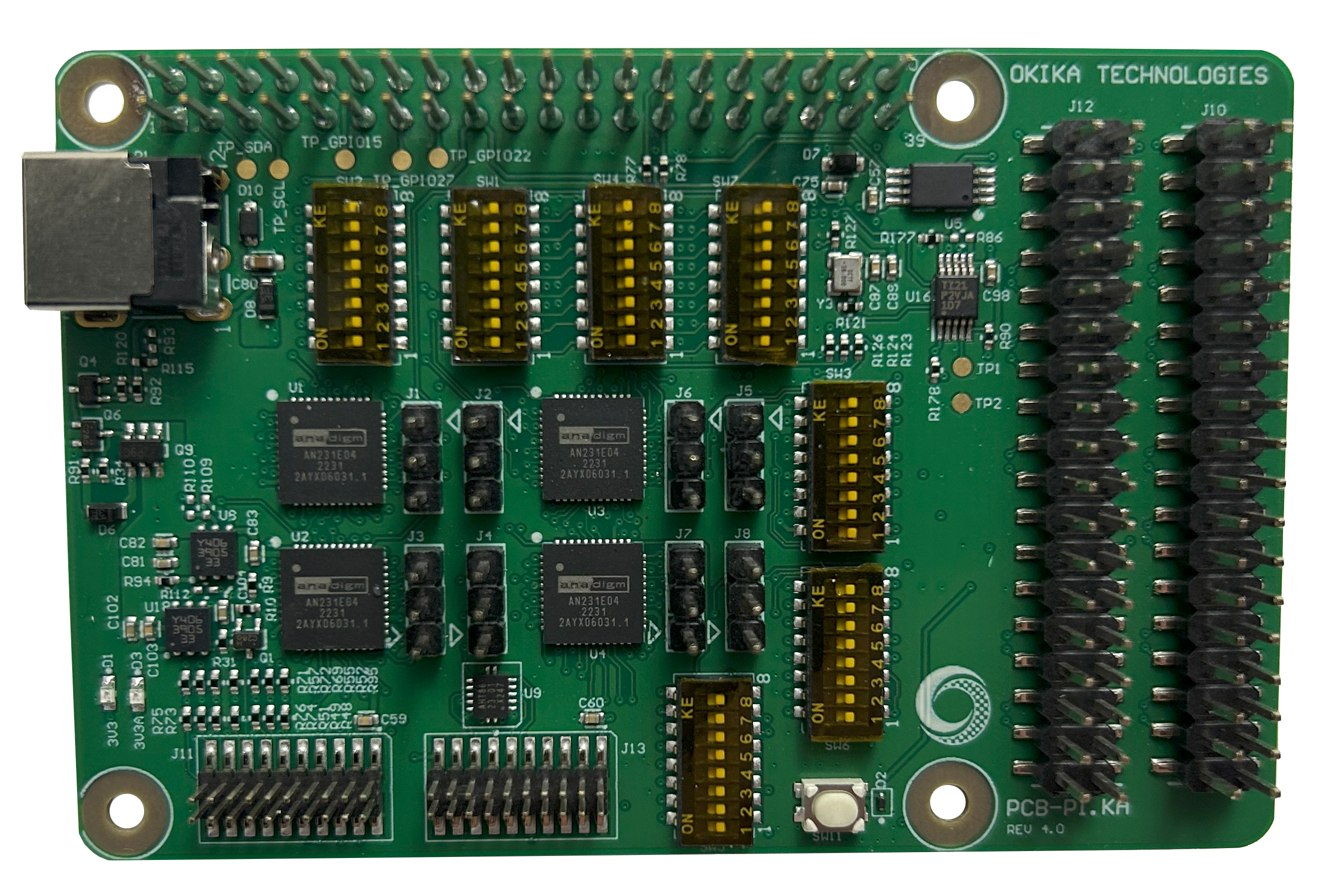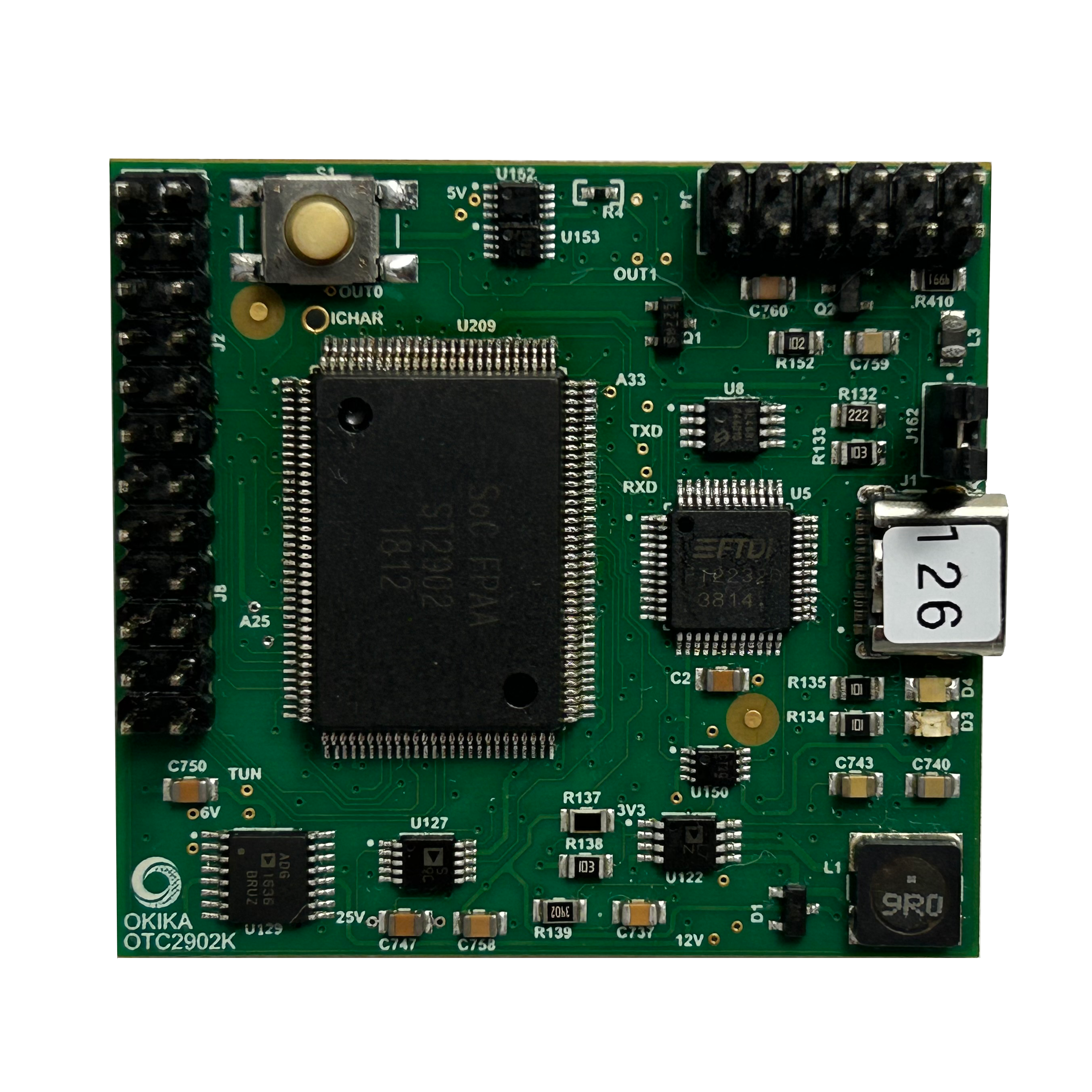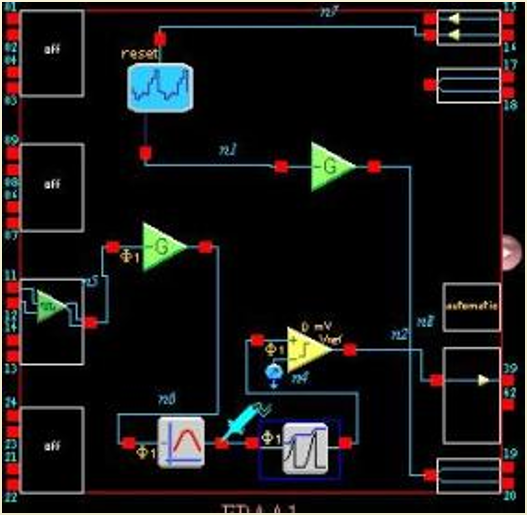The Okika PIKA is a quad-channel development board designed for seamless prototyping with the Raspberry Pi. It connects directly via a 2x20 header conforming to the Raspberry Pi HAT standard. Alternatively, it can interface with Arduino or other development platforms using standard 0.1" jumper wires. Power is supplied either through the Pi header or an external 7–12V power supply via a barrel jack, with automatic switching to the external source when connected.
Flexible routing options are provided through onboard switches, allowing direct connections between chips—such as linking Rauch filters or establishing backbone routing—without the need for external jumpers. The board also supports daisy-chaining and vertical stacking via jumper resistors.

Key Features:
- Four AN231E04 FlexAnalog FPAAs
- 2x20 0.1" header (Raspberry Pi HAT compatible)
- SPI interface for configuration data transfer
- Direct digital connections (IO5P and IO5N) from each FPAA to the Pi header
- Eight differential Rauch input filters (2 per FPAA)
Integrated backbone switches for chip-to-chip connections
- 0-ohm jumper resistors and pads for customizable routing
- 2.1mm ID / 5.5mm OD barrel jack for optional 7–12V power supply
- Onboard 16MHz oscillator for ACLK reference
- Clock selection multiplexer for switching between onboard and Pi-sourced clocks
- Two 2x18 0.1" headers for breadboarding
- “Previous” and “Next” connectors to support daisy-chaining multiple PIKA boards
- Unprogrammed HAT ID EEPROM available for user customization
Architecture

OTC2310K04-PIKA Block Diagram
Programming:
The board is programmed by exporting .ahf configuration files from Anadigm Designer 2, which are then transferred to the PIKA via the SPI interface. A sample Python project for programming and configuring the board is available on GitHub:
https://github.com/okikajre/pikapy
PiKa Board User Access & Control Points

PiKa Board Header Pinout

PiKa Board Analog Header

PiKa Board Switches












